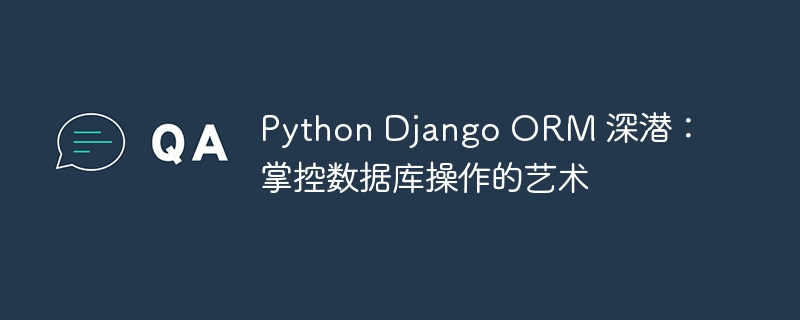

Django The Object Relational Mapper (ORM) is a powerful and flexible tool that allows DjanGo Developers interact with database in an object-oriented way. By using an ORM, developers can map database tables to python classes and access and manipulate data in the database through these classes.
How Django ORM works
Django ORM establishes an abstraction layer between the database and Python objects. When the Django ORM loads a database table, it creates a corresponding Python class. Instances of this class represent rows in the table, and the methods of the class are used to manipulate the data.
ORM uses metadata called metaclasses to describe the structure and behavior of a table. The metaclass defines the properties and methods of the class that correspond to the columns and constraints of the database table.
Mapping database table
To map a database table to a Python class, the developer needs to create a model class containing the following:
For example, the following model class maps to a table named "Person":
class Person(models.Model): name = models.CharField(max_length=50) age = models.IntegerField() class Meta: db_table = "person"
Query data
Django ORM provides various methods for querying database tables. The most commonly used methods include:
For example, the following code retrieves all people named "John":
persons = Person.objects.filter(name="John")
update data
To update data in a database table, you can modify the Python object and call the save() method on it. For example, the following code updates the age of a person named "John" to 30 years old:
person = Person.objects.get(name="John") person.age = 30 person.save()
delete data
To delete data from a database table, you can use the delete() method. For example, the following code deletes a person named "John":
person = Person.objects.get(name="John") person.delete()
Advanced Features
In addition to basic query and update operations, Django ORM also provides many advanced features, including:
Advantage
Using the Django ORM brings many advantages to Python developers, including:
in conclusion
Django ORM is a powerful tool that allows developers to efficiently interact with databases in an object-oriented manner. By using ORM, developers can simplify database operations, improve code quality, reduce redundant code, and increase development speed. Mastering the functionality of Django ORM is an essential skill for Python Django developers.
The above is the detailed content of Python Django ORM Deep Dive: Mastering the Art of Database Operations. For more information, please follow other related articles on the PHP Chinese website!




